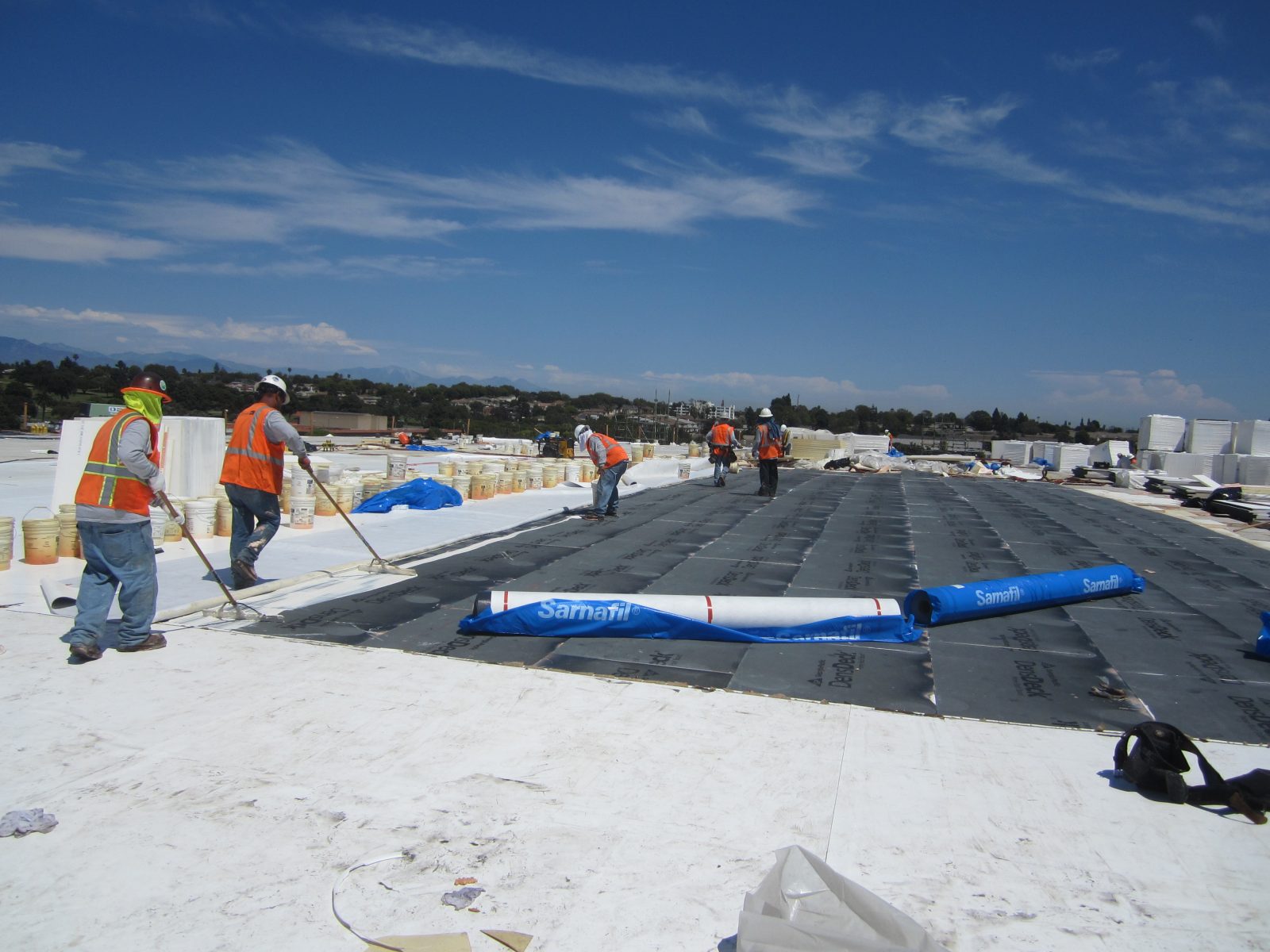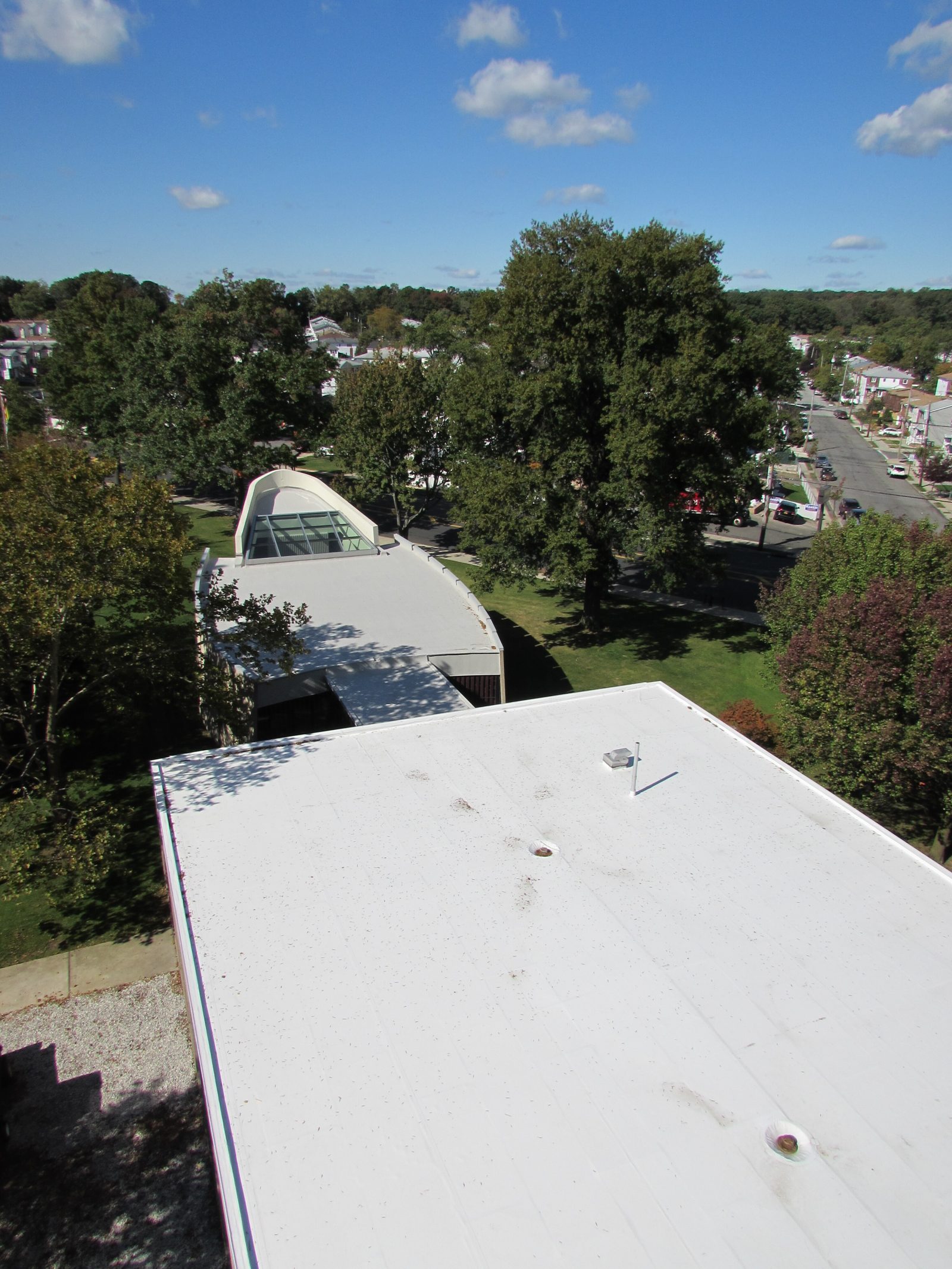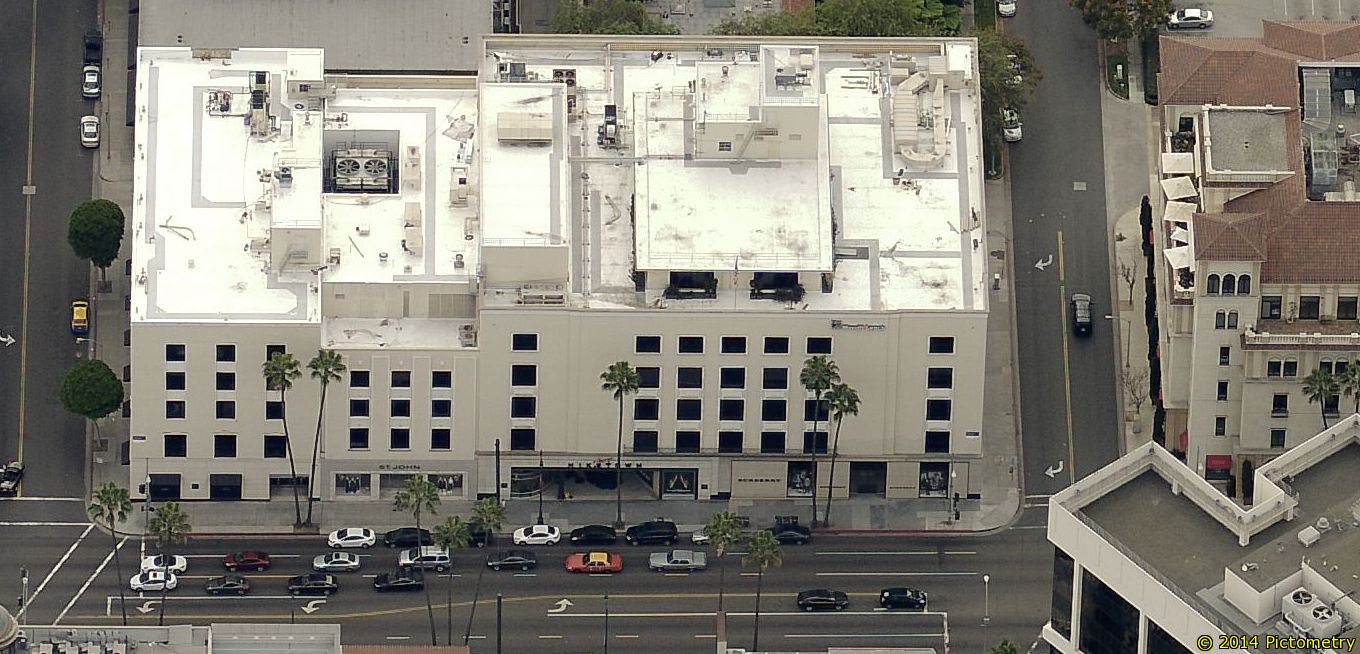Denver’s Green Buildings Ordinance Requirements for Hygrothermal Modeling and Dew Point Analysis on Roofs

As the model energy code adopts greener building practices, jurisdictions are going a step further with their local stretch codes and building ordinances to encourage better-performing buildings and accelerate progress toward carbon reduction goals. One such practice involves using “cool roofs,” which help reflect sunlight and reduce heat absorption into buildings. While cool roofs can be a convenient and cost-effective way to save energy, they can also have hygrothermal implications that affect the overall performance of the assembly. It is important to understand the parameters of cool roof requirements in places like Denver, CO, and follow best practices for design and construction to avoid unintended moisture- and temperature-related issues.
COOL ROOF REQUIREMENTS UNDER DENVER’S GREEN BUILDINGS ORDINANCE
Denver’s Green Buildings Ordinance (GBO) first went into effect on 2 November 2018 and outlines requirements that go beyond the model code to promote more sustainable development, increase green space, improve water and stormwater management, and consider renewable energy sources. One of these requirements is to provide a cool roof for qualifying building projects 25,000 square feet or larger, including:
- New buildings
- Building additions
- Roof replacements and re-covers of more than 5% of total roof area or individual roof sections
Certain projects are exempt from these requirements, as noted in Section 3.04 of the GBO rules and regulations.
Denver’s GBO defines a cool roof as “a roof, or portion of a roof, containing roof covering materials meeting certain solar reflectance values that mitigate or assist in reducing urban heat island effect.” Solar reflectance refers to the amount of solar energy a surface reflects, with higher values indicating greater reflectivity and less heat absorption. Performance of cool roofs can also be measured by the Solar Reflectance Index (SRI), which is a measure of a material’s ability to reflect solar energy, taking into account both the amount of solar reflectance and the emittance of thermal radiation. For a typical low-slope roof, the GBO rules and regulations require new roofing to meet specified Initial Minimum Reflectance, 3-Year Minimum Reflectance, Initial Solar Reflectance Index (SRI) Minimum, or 3-Year SRI Minimum values (see table below).
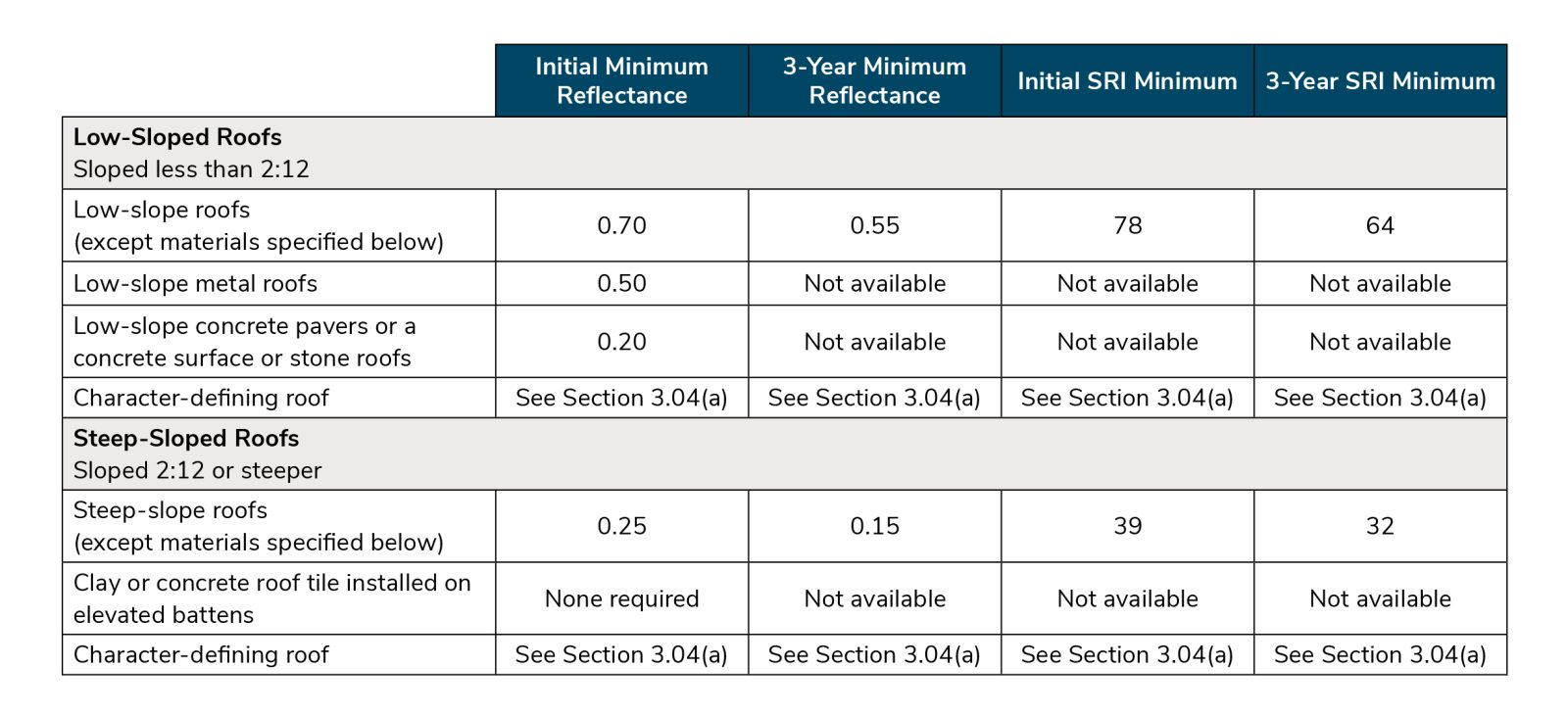
GBO REQUIREMENTS FOR ADDRESSING CONDENSATION POTENTIAL FROM COOL ROOFS
Installing cool roof membranes with lower solar absorption values over existing assemblies that previously had higher solar absorption can have condensation implications. The increased solar reflectance of cool roof membranes results in cooler temperatures in the roof assembly below the membrane, increasing the chance of condensation during the winter months.
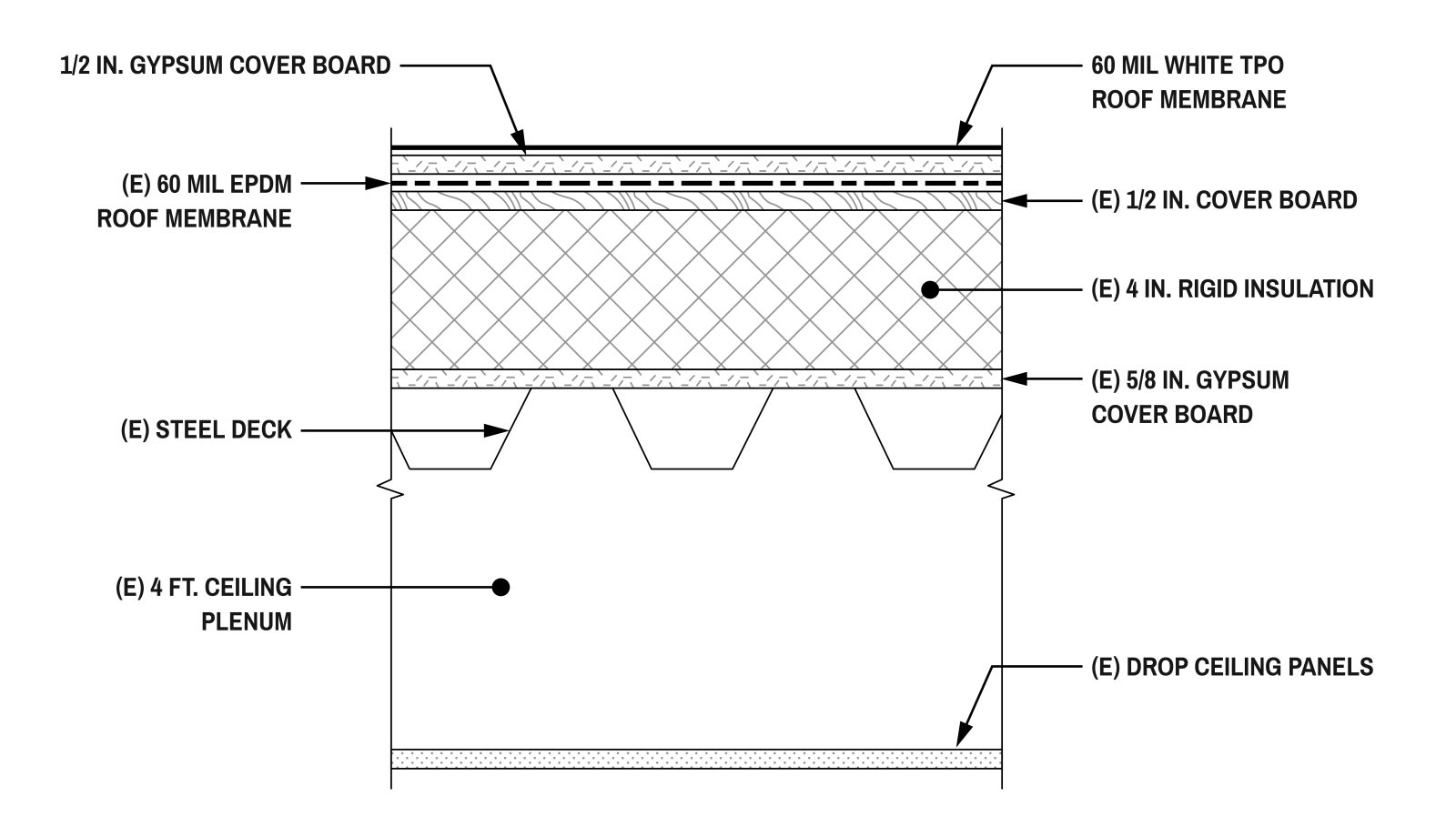
Section 3.03(b)(i) of the GBO rules and regulations addresses this condensation potential by offering three paths for designing a roof re-cover or roof replacement on an existing roof that did not previously have a cool roof covering:
- For steep-slope roofs: Design the roof to meet the International Building Code (IBC) ventilation requirements outlined in Section 1202.2 or 1202.3.
- For low-sloped roofs:
- Provide an air barrier and at least a Class III vapor retarder over the roof deck (both measures may be provided in a single layer).
- Provide insulation above the roof deck with an R-value that is greater by at least R-18 than the insulation below the deck. The roof insulation must also meet any other requirements of the current version of the International Energy Conservation Code.
- Submit a dew point analysis.
If the dew point analysis path is chosen, the roof system must be designed by a professional roofing consultant, architect, or engineer. Additionally, the professional must submit an analysis of the existing roof that identifies the dew point and includes a section detail of the roofing system identifying the vapor retarder, air barrier, and other condensation controlling components.
CHOOSING AN APPROPRIATE DEW POINT ANALYSIS METHOD
Denver’s GBO guidelines require the dew point analysis to be prepared by a registered professional in one of two ways: by the dew point method or by a simulation (i.e., hygrothermal) model.
There are a few considerations that should be taken into account when deciding between these two methods. While the dew point method can provide a quick solution without requiring expertise in hygrothermal modeling, it has several significant drawbacks:
- It relies on static input, meaning it only calculates dew point temperatures at a single point in time, with one set of interior and exterior conditions. In this case, initial calculations are required to reference an extreme summer condition and the most extreme winter temperatures in Denver, which results in overly conservative results.
- It does not account for certain material properties, such as moisture storage and capillary flow, that affect the speed of drying.
- It does not consider the impact of solar reflectance on the roof assembly. Without the ability to account for this, it is not able to assess the difference in performance of a cool roof compared to the original, non-reflective roof membrane.
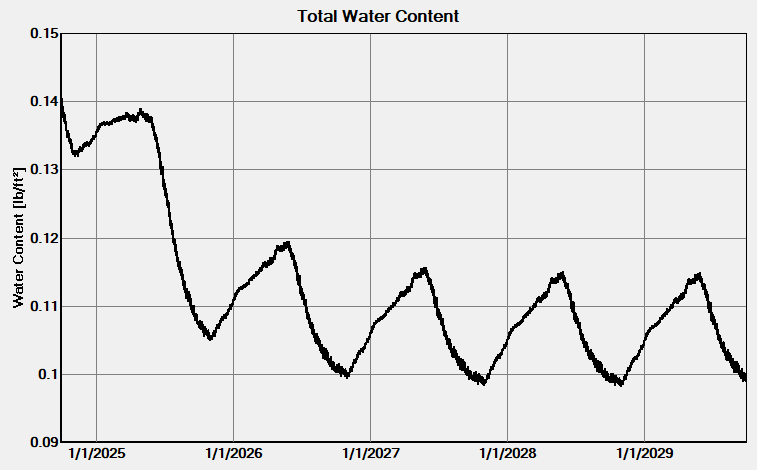
Graph of total water content within a roof assembly with a cool roof recover over time.
Chapter 25 in ASHRAE Handbook—Fundamentals notes that “because all moisture transfer mechanisms except water vapor diffusion are excluded, results [from the dew point method] should be considered as approximations and should be used with extreme care.”
A hygrothermal model, on the other hand, accounts for transient heat, air, and moisture flow through the assembly; material properties that affect the speed of drying; and the solar reflectance of the roof membrane. This allows for a more comprehensive, time-dependent analysis of the assembly that better represents its actual performance.
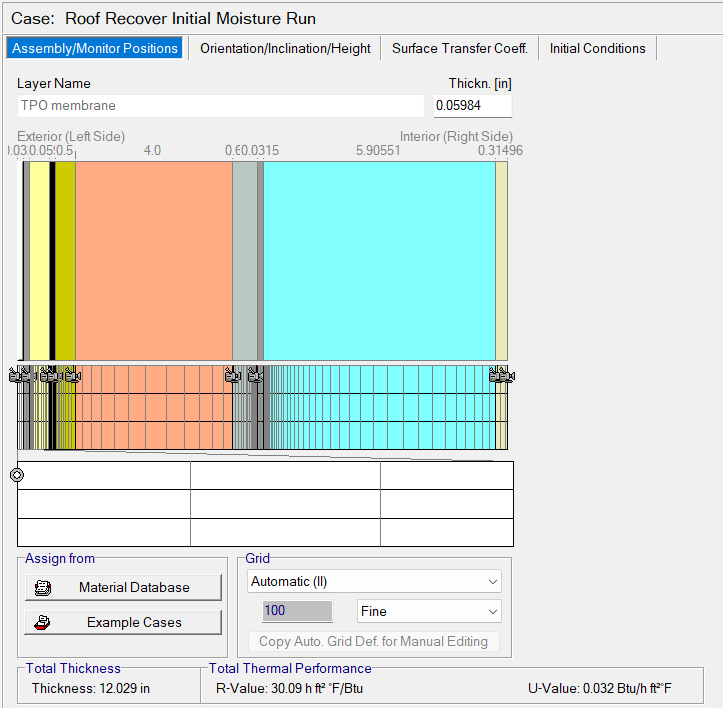
WUFI hygrothermal modeling software.
Conclusion
While the overall goal of Denver’s GBO is to promote sustainability, it also recognizes the potential hygrothermal impacts associated with installing cool roofs over existing assemblies. Although prescriptive options that can eliminate the need for a dew point analysis exist, these options may not always be practical. By including the dew point analysis path, the ordinance allows flexibility when meeting cool roof requirements while providing safeguards for the durability of the roof assembly when it comes to condensation control.
